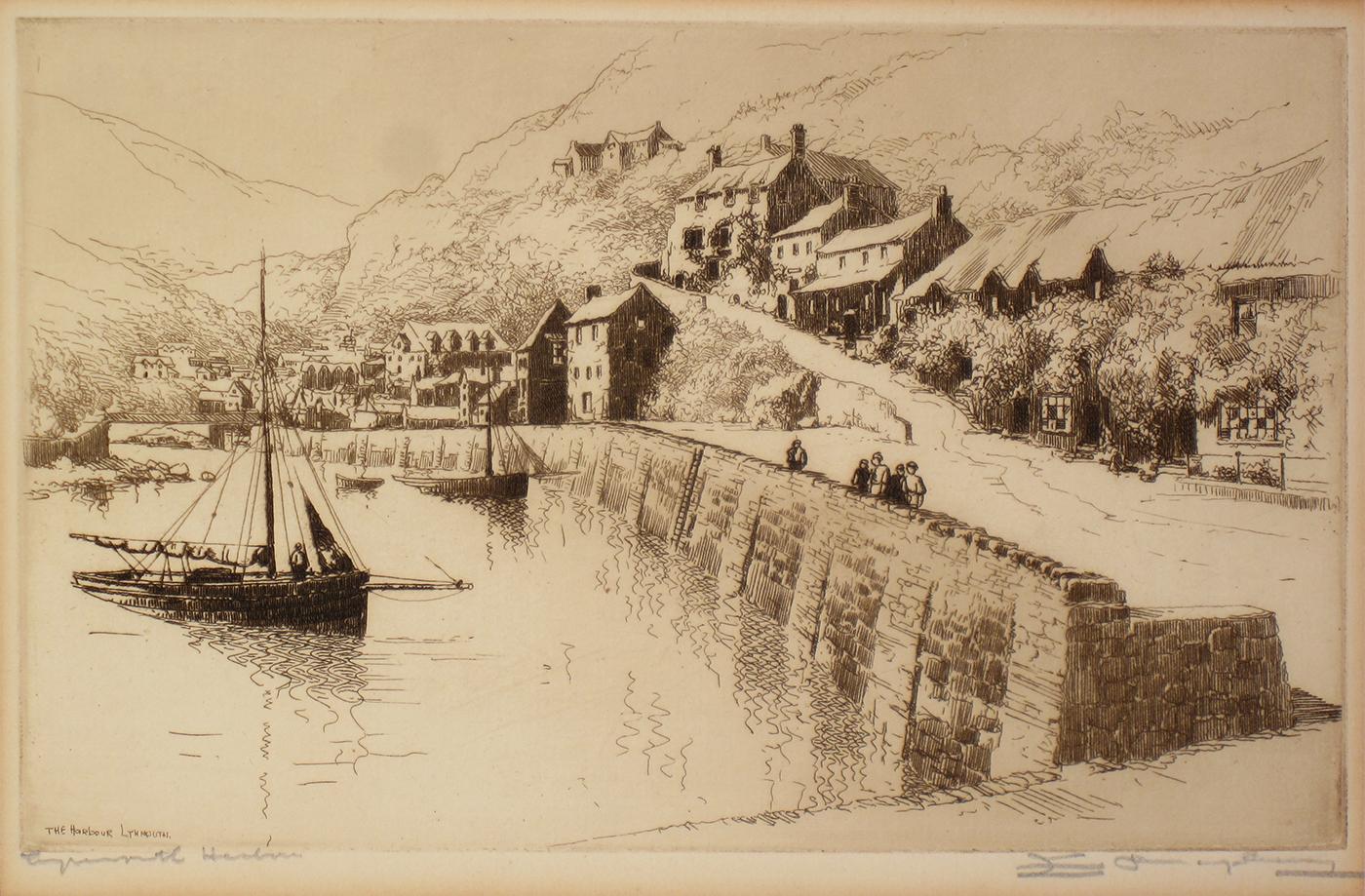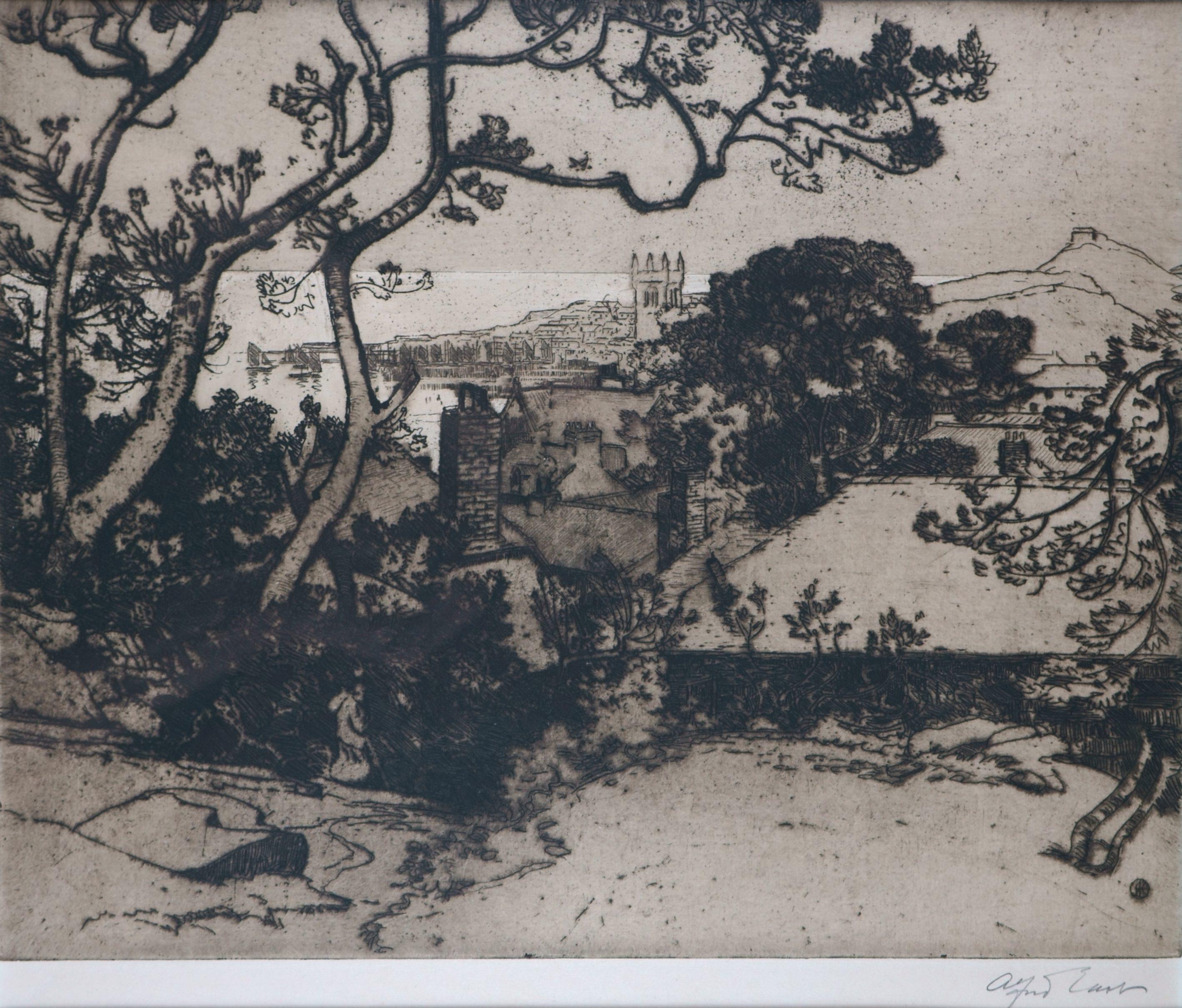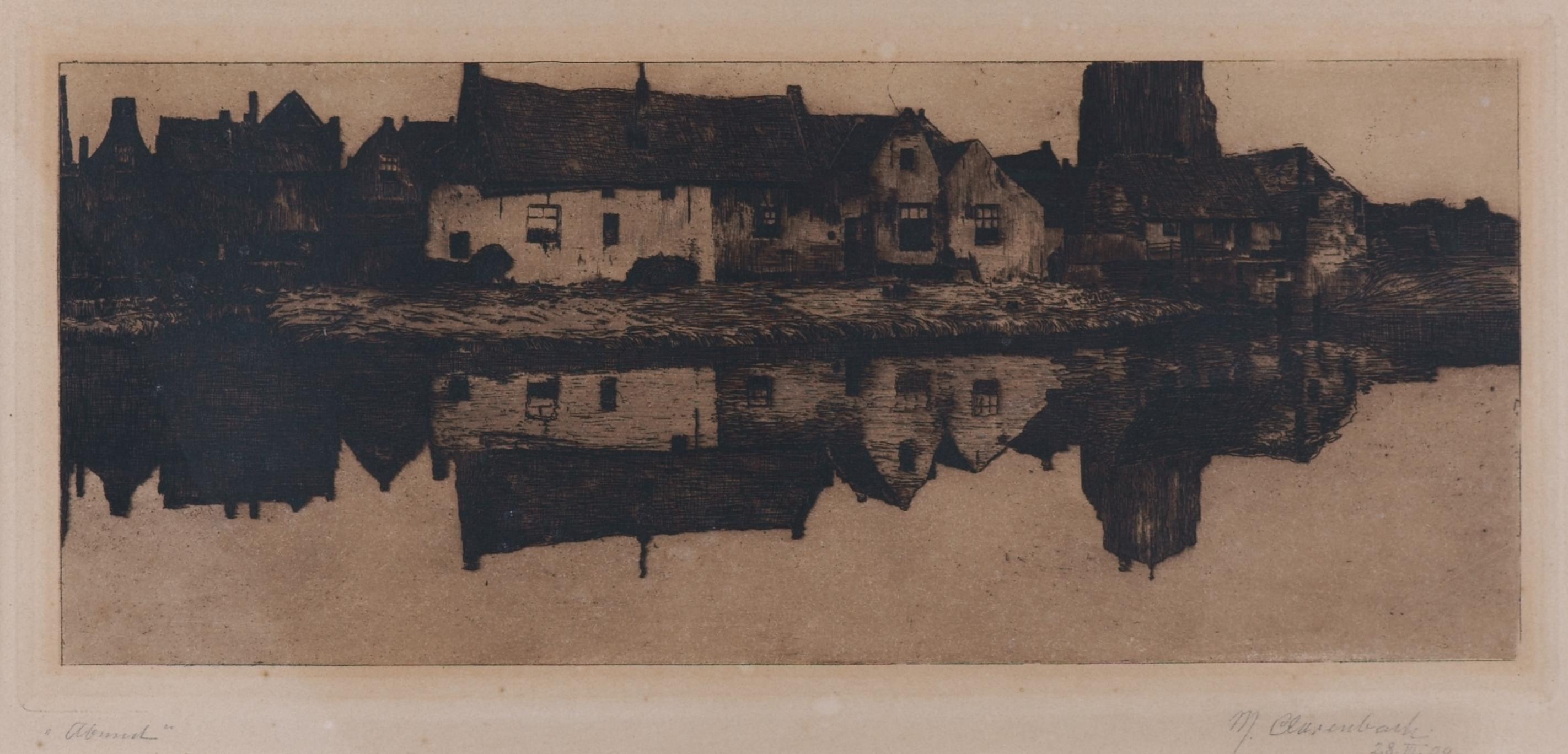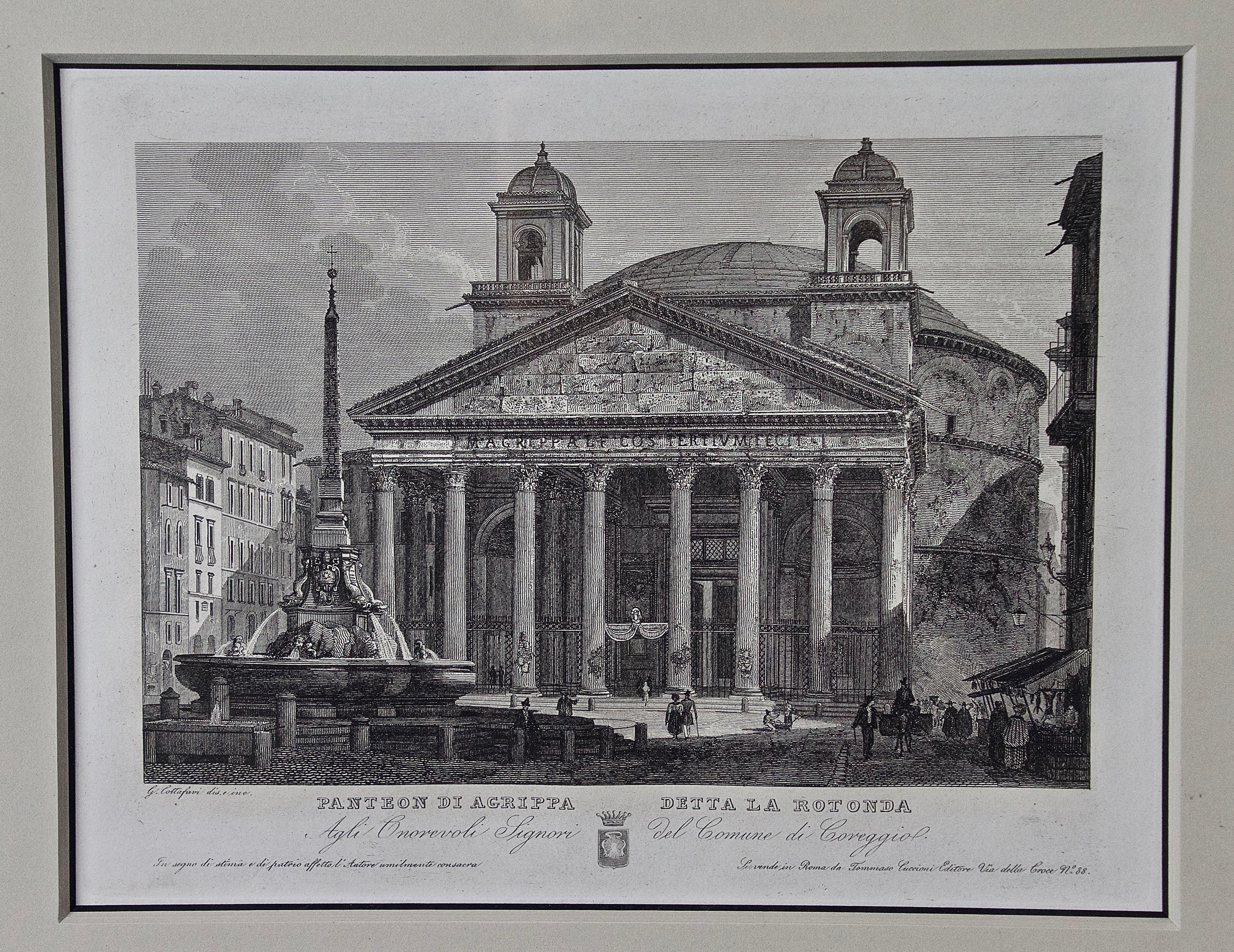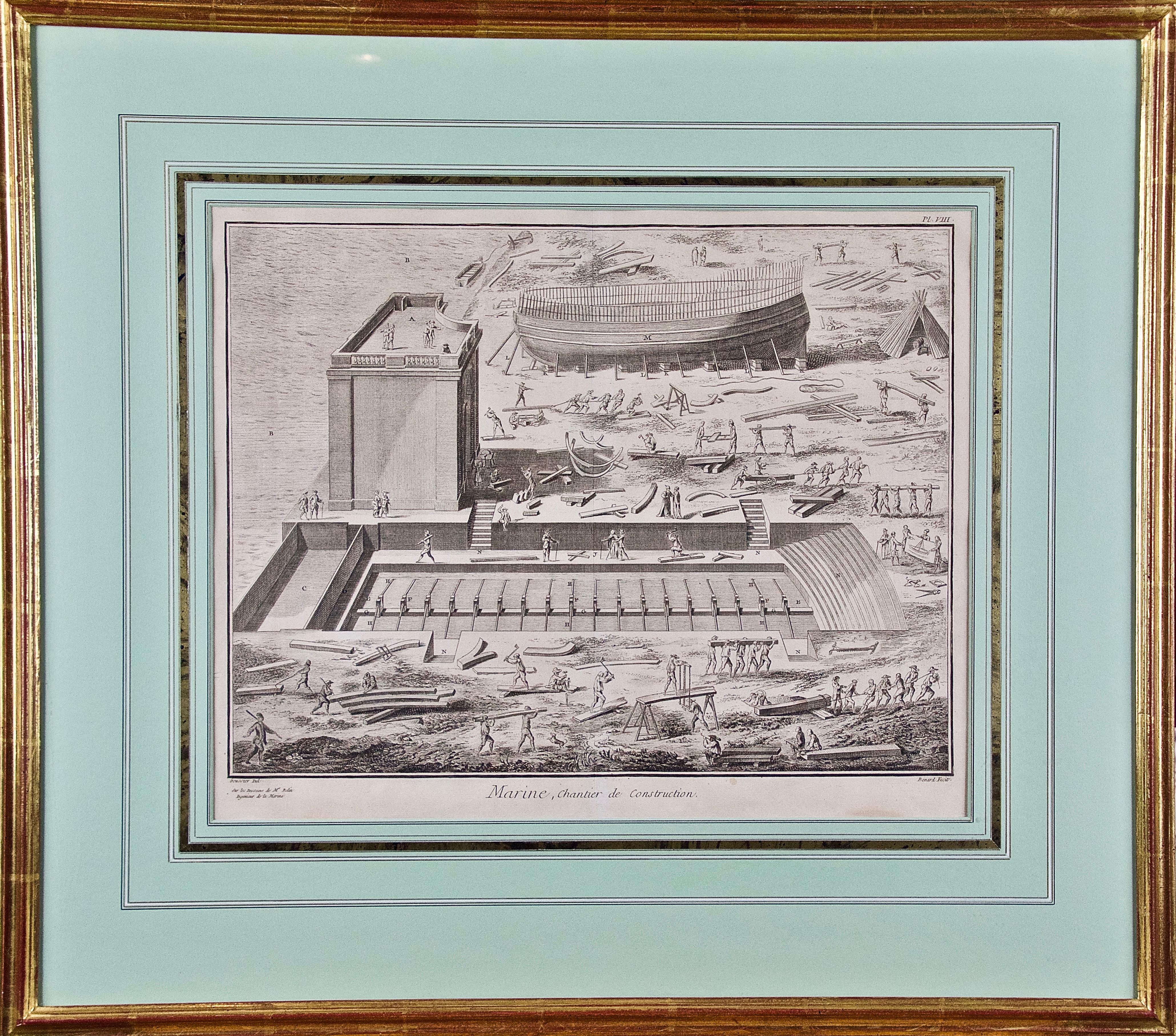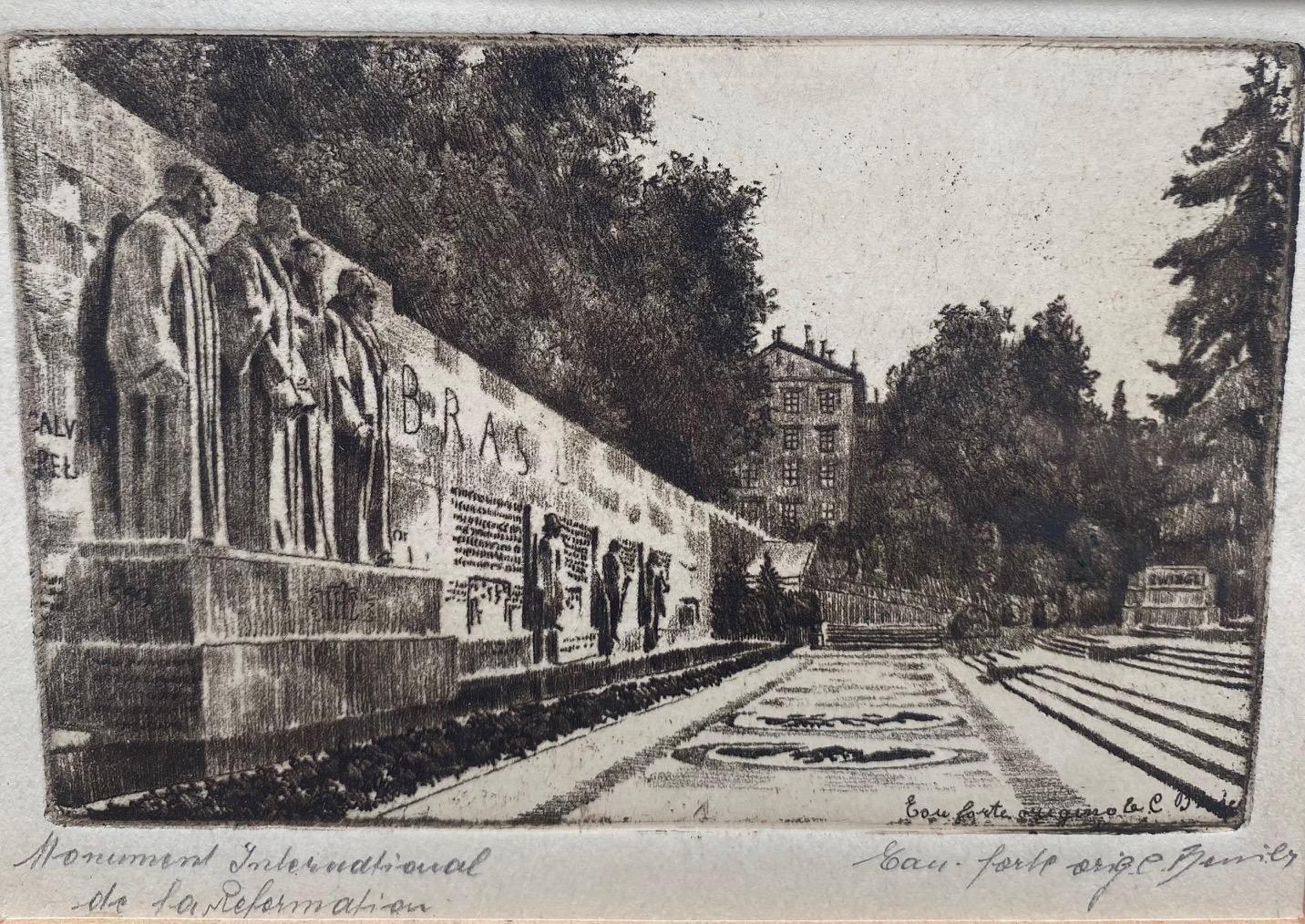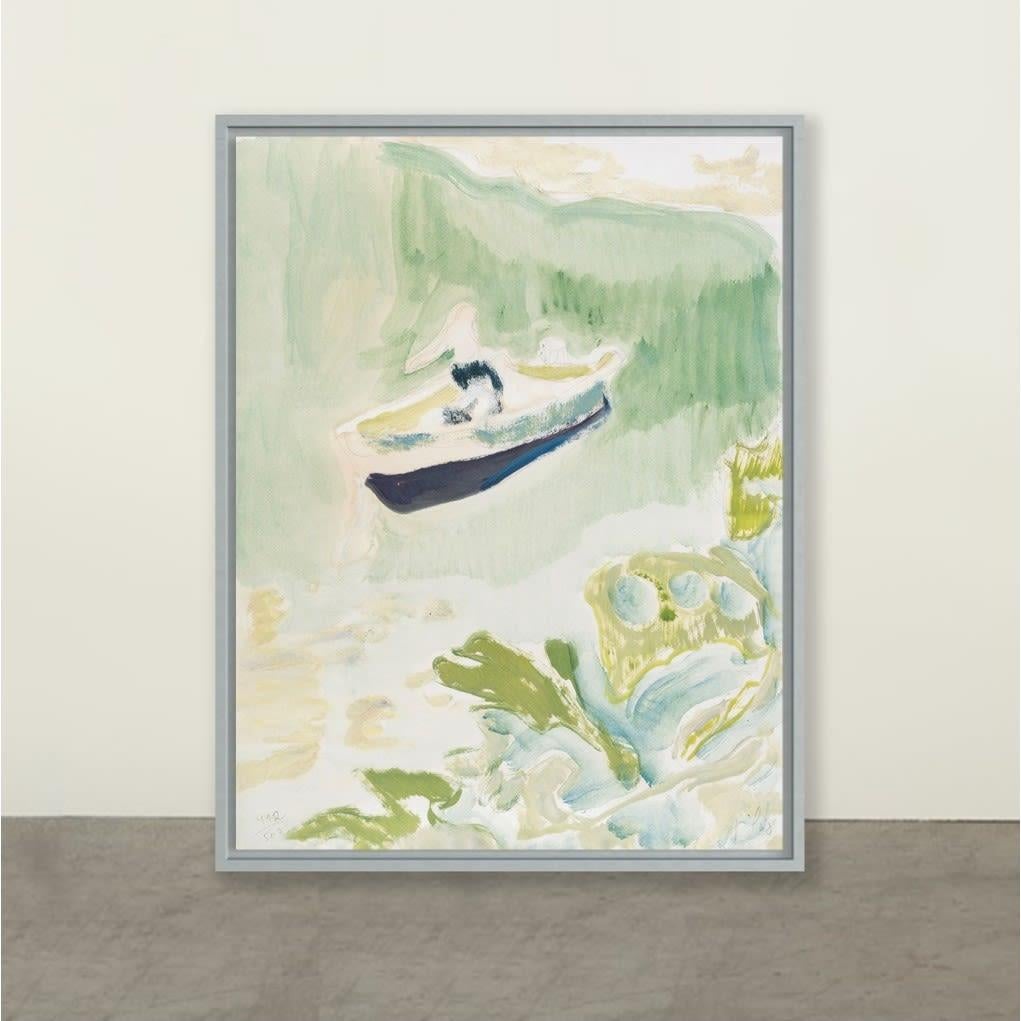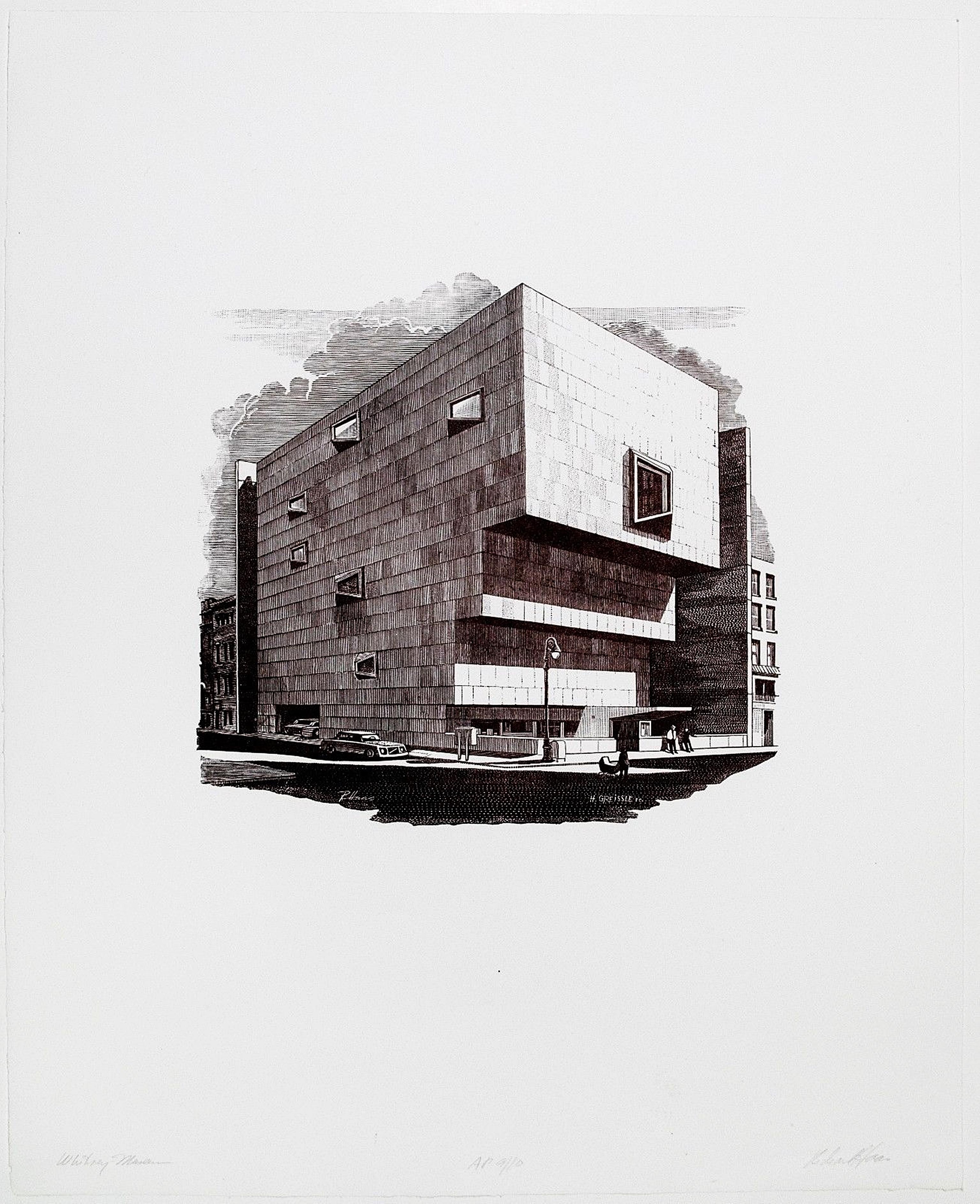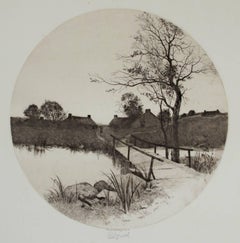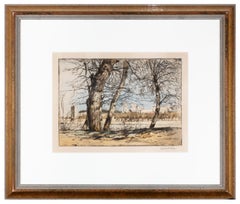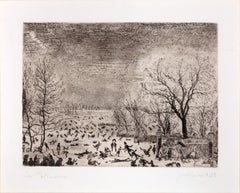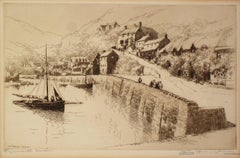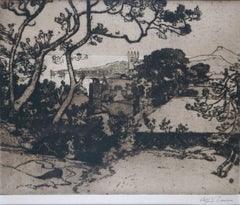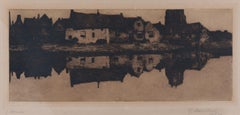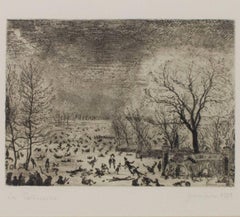
"Les Patineurs, " Etching of a Winter Landscape signed by James Ensor
View Similar Items
Want more images or videos?
Request additional images or videos from the seller
1 of 7
James Ensor"Les Patineurs, " Etching of a Winter Landscape signed by James Ensor1889
1889
About the Item
- Creator:James Ensor (1860 - 1949, Belgian)
- Creation Year:1889
- Dimensions:Height: 24.25 in (61.6 cm)Width: 26.75 in (67.95 cm)
- Medium:
- Movement & Style:
- Period:
- Condition:
- Gallery Location:Milwaukee, WI
- Reference Number:Seller: 1431d1stDibs: LU60531956633
About the Seller
4.9
Platinum Seller
These expertly vetted sellers are 1stDibs' most experienced sellers and are rated highest by our customers.
Established in 1966
1stDibs seller since 2017
390 sales on 1stDibs
Typical response time: 1 hour
More From This SellerView All
- "The Boat House, " an Etching signed by Edward Loyal FieldBy Edward Loyal FieldLocated in Milwaukee, WI"The Boat House" is a signed (lower center) etching by Edward Loyal Field. It depicts a scene across a river in the foreground, where a quaint set of houses sits in black and white.1...Category
1880s Realist Landscape Prints
MaterialsEtching
- "Le Rhone a Avignon" Hand Colored Etching, SignedBy Armand CoussensLocated in Milwaukee, WI"Le Rhone a Avignon" is an original hand colored etching signed by the artist Armand Coussens. This incredibly rare print depicts a church in Avignon, where Pablo Picasso had one of ...Category
Early 20th Century Realist Landscape Prints
MaterialsEtching
- "Les Patineurs, " Etching of a Winter Landscape signed by James EnsorBy James EnsorLocated in Milwaukee, WI"Les Patineurs" is a signed etching by James Ensor. It is from the Loÿs Delteil 65 volume XIX and depicts a multitude of skaters on a frozen pond. "Les Patineurs" is the French word ...Category
Late 19th Century Realist Landscape Prints
MaterialsEtching
- 'Hyde Park' original woodcut engraving signed by Auguste Louis LepèreBy Auguste Louis LepèreLocated in Milwaukee, WIThe present artwork is an excellent example of the woodcut engravings of Auguste-Louis Lepère (1849 - 1918). He was the son of the sculptor Francois Lepère, and is considered a leade...Category
1860s Realist Figurative Prints
MaterialsEngraving, Woodcut
- "Peaceful Cove - New England, " Original Lithograph signed by Adolf DehnBy Adolf DehnLocated in Milwaukee, WI"Peaceful Cove - New England" is an original lithograph by Adolf Dehn. The artist signed the piece lower right. It depicts an aerial view of New England. 9 1/2" x 13" image 11" x 15" paper 17" x 20 5/8" frame Adolf Dehn was born in Minnesota, November 22, 1895 and he died in New York City, May 19 1968. He was one of the most notable lithographers of the 20th century. Throughout his artistic career, Dehn participated in and helped define some important movements in American art, including Regionalism, Social Realism, and caricature. He was known for both his technical skills and his high-spirited, droll depictions of human foibles. Biography Dehn was born in 1895 in Waterville, Minnesota. Dehn began creating artwork at the age of six and by the time of his death had created nearly 650 images. After high school he went to the Minneapolis School of Art, known today as the (Minneapolis College of Art and Design) where he met Wanda Gág...Category
1940s Realist Landscape Prints
MaterialsLithograph
- "Jamais Bredouille (Never Empty-handed)" Color Lithograph after Jules DenneulinBy Jules DenneulinLocated in Milwaukee, WI"Jamais Bredouille (Never Empty-Handed)" is a color lithograph after Jules Denneulin. It depicts a hunter showing his day's work to a farmer on a path at dusk. 20" x 26" art 40 1/4...Category
1880s Realist Figurative Prints
MaterialsLithograph
You May Also Like
- The Harbour Lynmouth. Antique Print 1920sLocated in Sydney, NSWEdgar James Maybery The Harbour Lynmouth Antique Print 1920s Matt size 28cm x 33cm Image Size 14cm x 21 cmCategory
Early 20th Century Realist Landscape Prints
MaterialsEtching
- View of a coastal town / - The Pilgrim's View -Located in Berlin, DEAlbert Ernst (1909 Fronhofen - 1996 Hamburg), View of a Coastal Town, etching, 30 x 37 cm (picture), 45 x 50.5 cm (frame), signed in pencil lower right "Albert Ernst", framed under g...Category
Mid-20th Century Realist Landscape Prints
MaterialsEtching
$218 Sale Price20% Off - Evening - The depth of the visible -Located in Berlin, DEMax Clarenbach (1880 Neuss - Cologne 1952), Evening. Etching, 18 x 41 cm (platemark), 33.5 x 57 cm (frame), inscribed "Abend" in pencil at lower left, signed and dated "M. Clarenbach. 28.III.[19]09". Framed and mounted under glass. - Somewhat browned and slightly foxed. About the artwork The horizontally elongated etching depicts the panoramic view of a small town as seen from the other side of the river. There are gabled houses on the left and a mighty church spire on the right. The bourgeois houses and the large religious building indicate the urban character. These buildings are rendered in dark tones to emphasise the lighter row of houses in the centre of the picture, closer to the water. The chiaroscuro contrast creates two parallel planes that open up a space for the imagination of what the city could be. The imagination is stimulated by the almost entirely dark, barely recognisable buildings, while the arm of the river leading into the city further stimulates the imagination. However, as the silhouette of the city as a whole is reflected in the water, the parallel planes are perceived as a band of houses that stretches across the entire horizontality of the etching and seems to continue beyond the borders of the picture. The reflection has almost the same intensity as the houses themselves, so that the band of buildings merges with their reflection to form the dominant formal unit of the picture. Only the parallel horizontal hatching creates the convincing impression of seeing water, demonstrating Max Clarenbach's mastery of the etching needle. The water is completely motionless, the reflection unclouded by the slightest movement of the waves, creating a symmetry within the formal unity of the cityscape and its reflection that goes beyond the motif of a mere cityscape. A pictorial order is established that integrates everything in the picture and has a metaphysical character as a structure of order that transcends the individual things. This pictorial order is not only relevant in the pictorial world, but the picture itself reveals the order of the reality it depicts. Revealing the metaphysical order of reality in the structures of its visibility is what drives Clarenbach as an artist and motivates him to return to the same circle of motifs. The symmetry described is at the same time inherent an asymmetry that is a reflection on art: While the real cityscape is cut off at the top of the picture, two chimneys and above all the church tower are not visible, the reflection illustrates reality in its entirety. The reflection occupies a much larger space in the picture than reality itself. Since antiquity, art has been understood primarily as a reflection of reality, but here Clarenbach makes it clear that art is not a mere appearance, which can at best be a reflection of reality, but that art has the potential to reveal reality itself. The revealed structure of order is by no means purely formalistic; it appears at the same time as the mood of the landscape. The picture is filled with an almost sacred silence. Nothing in the picture evokes a sound, and there is complete stillness. There are no people in Clarenbach's landscape paintings to bring action into the picture. Not even we ourselves are assigned a viewing position in the picture, so that we do not become thematic subjects of action. Clarenbach also refrains from depicting technical achievements. The absence of man and technology creates an atmosphere of timelessness. Even if the specific date proves that Clarenbach is depicting something that happened before his eyes, without the date we would not be able to say which decade, or even which century, we are in. The motionless stillness, then, does not result in time being frozen in the picture, but rather in a timeless eternity that is nevertheless, as the title "Abend" (evening), added by Clarenbach himself, makes clear, a phenomenon of transition. The landscape of the stalls is about to be completely plunged into darkness, the buildings behind it only faintly discernible. The slightly darkened state of the sheet is in keeping with this transitional quality, which also lends the scene a sepia quality that underlines its timelessness. And yet the depiction is tied to a very specific time. Clarenbach dates the picture to the evening of 28 March 1909, which does not refer to the making of the etching, but to the capture of the landscape's essence in the landscape itself. If the real landscape is thus in a state of transition, and therefore something ephemeral, art reveals its true nature in that reality, subject to the flow of phenomena, is transferred to an eternal moment, subject to a supra-temporal structure of order - revealed by art. Despite this supratemporality, the picture also shows the harbingers of night as the coming darkening of the world, which gives the picture a deeply melancholy quality, enhanced by the browning of the leaf. It is the philosophical content and the lyrical-melancholic effect of the graphic that give it its enchanting power. Once we are immersed in the image, it literally takes a jerk to disengage from it. This etching, so characteristic of Max Clarenbach's art, is - not least because of its dimensions - a major work in his graphic oeuvre. About the artist Born into poverty and orphaned at an early age, the artistically gifted young Max Clarenbach was discovered by Andreas Achenbach and admitted to the Düsseldorf Art Academy at the age of 13. "Completely penniless, I worked for an uncle in a cardboard factory in the evenings to pay for my studies.” - Max Clarenbach At the academy he studied under Arthur Kampf, among others, and in 1897 was accepted into Eugen Dücker...Category
Early 1900s Realist Landscape Prints
MaterialsEtching
- The Thames, 1894 - Victorian aquatint etching of London by Joseph PennellBy Joseph PennellLocated in London, GBJOSEPH PENNELL (1857-1926) The Thames, 1894 Signed Aquatint Plate size 20.5 by 26.5 cm., 8 by 10 ½ in. (frame size 42 by 46 cm., 16 ½ by 18 in.) Pennell was born in Philadelphia where he studied at School of Industrial Art and the Academy of Fine Arts. In 1884 he was commissioned by the Century Magazine to supply a series of drawings of London...Category
1890s Realist Landscape Prints
MaterialsAquatint
- The Pantheon in Rome: A 19th Century Etching by CottafaviLocated in Alamo, CAThis is a 19th century architectural etching of the Pantheon in Rome entitled "Panteon di Agrippa detta La Rotonda", plate 9 from "Raccolta delle principali vedute di Roma e...Category
Mid-19th Century Realist Landscape Prints
MaterialsEtching
- "Marine Chantier de Construction": 18th C. Engraving of Shipbuilding by DiderotBy Denis DiderotLocated in Alamo, CA"Marine Chantier de Construction", plate VIII from the 18th century "Encyclopédie, ou dictionnaire raisonné des sciences, des arts et des métiers" (Encyclopedia, or a Systematic Dict...Category
1750s Realist Landscape Prints
MaterialsEtching, Engraving
Recently Viewed
View AllMore Ways To Browse
James I
Copper Etching Plate
Print Of Skaters
Etching Surrealism
19th Century Signed Etchings
French Etching Surrealism
Antique Skates
French Century Xix Frame
Ensor Etching
Frozen Pond
Raimondi Giuseppe
Tiffany Hand Mirror
Japanese Woodblock Bridge
16th Century Colored Engraving
Retro Colorado Poster
Skull Mirror
Dali Andrew
Christo Reichstag
